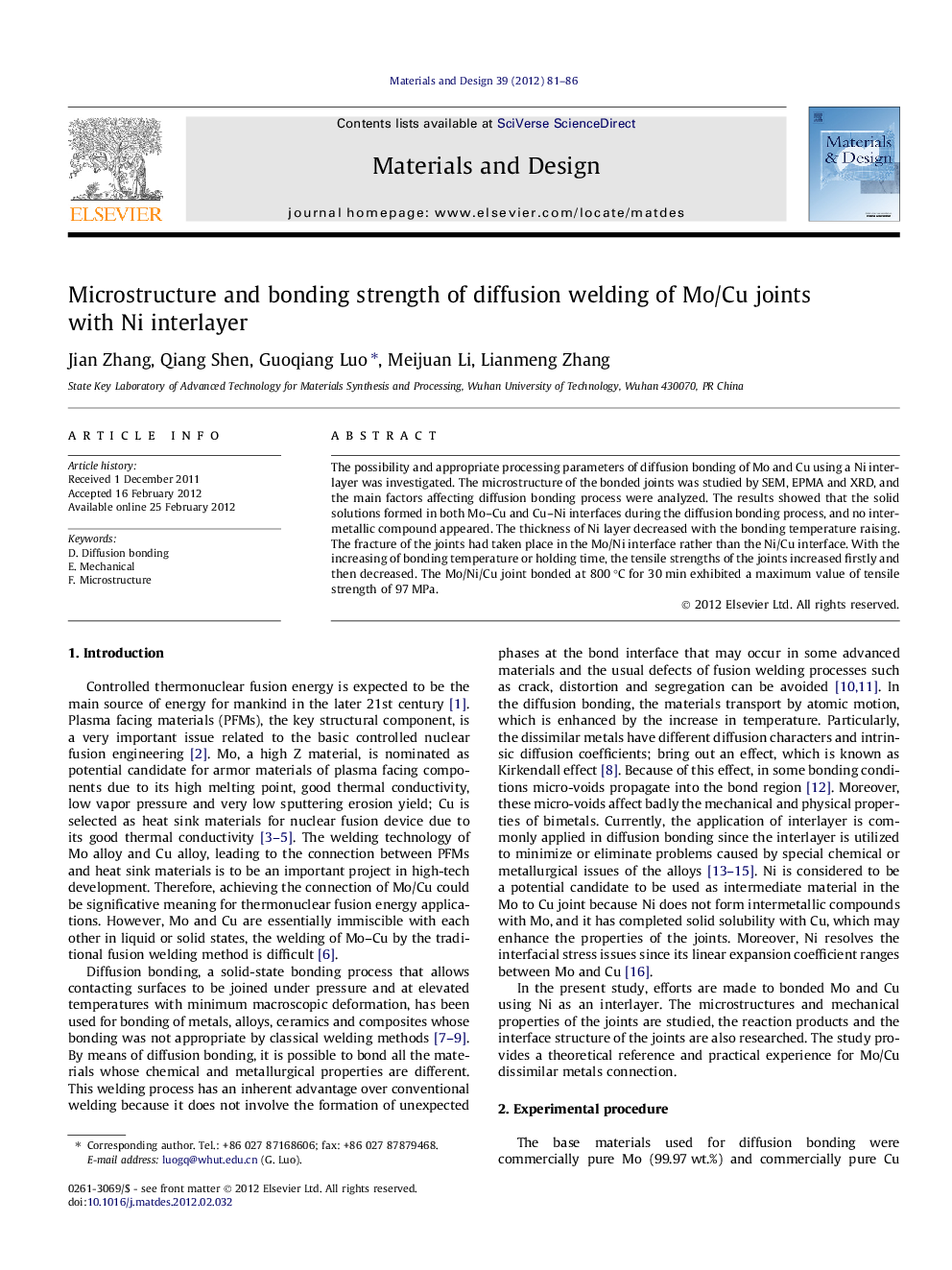| Article ID | Journal | Published Year | Pages | File Type |
|---|---|---|---|---|
| 830651 | Materials & Design (1980-2015) | 2012 | 6 Pages |
The possibility and appropriate processing parameters of diffusion bonding of Mo and Cu using a Ni interlayer was investigated. The microstructure of the bonded joints was studied by SEM, EPMA and XRD, and the main factors affecting diffusion bonding process were analyzed. The results showed that the solid solutions formed in both Mo–Cu and Cu–Ni interfaces during the diffusion bonding process, and no intermetallic compound appeared. The thickness of Ni layer decreased with the bonding temperature raising. The fracture of the joints had taken place in the Mo/Ni interface rather than the Ni/Cu interface. With the increasing of bonding temperature or holding time, the tensile strengths of the joints increased firstly and then decreased. The Mo/Ni/Cu joint bonded at 800 °C for 30 min exhibited a maximum value of tensile strength of 97 MPa.
► The maximum tensile strength of Mo and Cu is at 800 °C for 30 min by Ni interlayer. ► The tensile strength of the joint increases at first and then decreases. ► There are solid solution layers across the Mo–Ni and Ni–Cu interface. ► Grain growth occurs on the interface accompanied by a decrease in strength. ► Kirkendall voids are formed in the Cu side.
